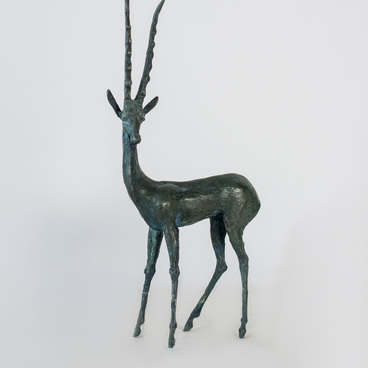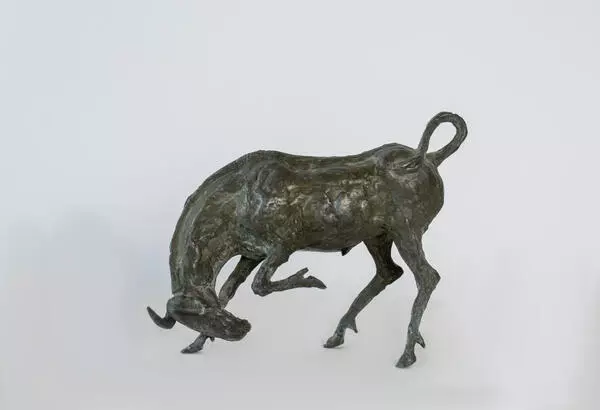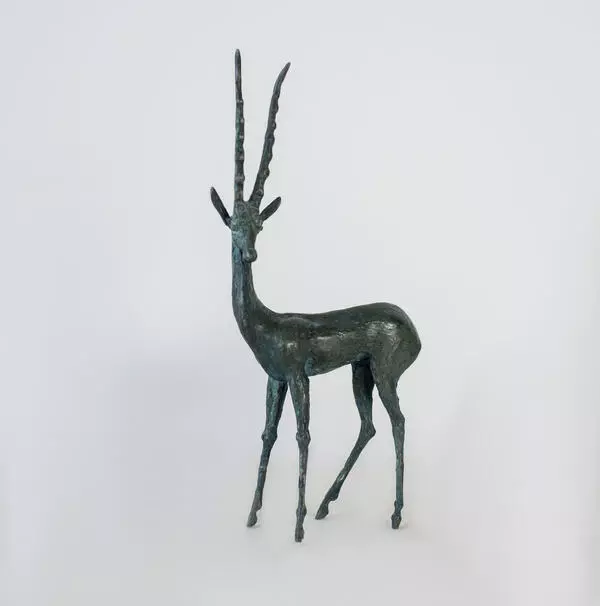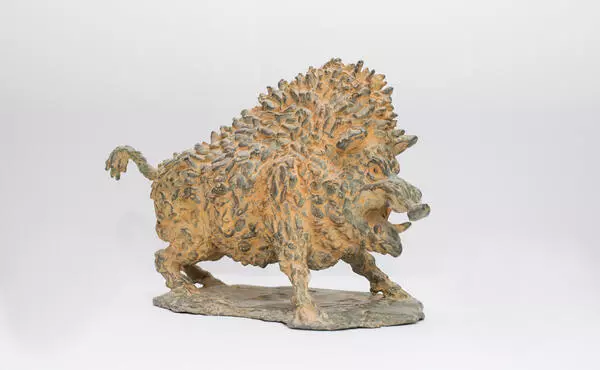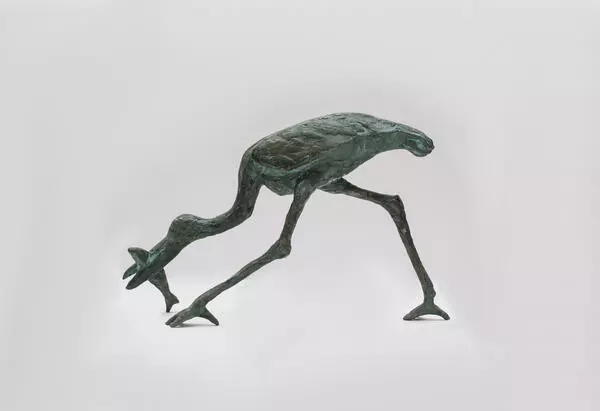The Volzhsky Art Gallery displays several small sculptures, which were created by the animalier Andrey Martz in the 1990s.
One of them is called “Goat”. Martz depicted the animal going about its business with its head held high. The figurine is dark gray, with soft relief waves on its sides, imitating thick, long wool. The goat has two slightly curved horns, and there is a large metal bell on its neck.
Such bells were called “botals” in Russian. They were put on animals that grazed without a shepherd. A peasant could always find his animal by the ring of the bell if it left the pasture and went into the woods or got into tall grass. Since all bells sounded differently, they helped the owners to find their animals, even if they grazed in a common herd. In addition to the practical purposes, bells had magical qualities: peasants believed that the ringing could scare away evil forces and prevent them from spoiling milk or wool.
The domestic goat is an even-toed ungulate of the animal family Bovidae and the subfamily Caprinae. It was one of the first animals that humans were able to tame. The goat was domesticated in the Middle East about 11,000 years ago. Domestication happened in the western, eastern, and southern areas of the region simultaneously and independently. As trade developed, the differences between the three species of goats became not so pronounced.
Domestic goats would eat just about any type of vegetation — their diet includes more than 600 kinds of grass. They also feed on the young shoots of trees and shrubs. They usually eat a lot and quickly and are able to survive even when grazing on the least productive pastures. At the same time, they are excellent climbers and can graze in places inaccessible to other livestock. Man gets meat, milk, fur, wool and skin from goats.
One of them is called “Goat”. Martz depicted the animal going about its business with its head held high. The figurine is dark gray, with soft relief waves on its sides, imitating thick, long wool. The goat has two slightly curved horns, and there is a large metal bell on its neck.
Such bells were called “botals” in Russian. They were put on animals that grazed without a shepherd. A peasant could always find his animal by the ring of the bell if it left the pasture and went into the woods or got into tall grass. Since all bells sounded differently, they helped the owners to find their animals, even if they grazed in a common herd. In addition to the practical purposes, bells had magical qualities: peasants believed that the ringing could scare away evil forces and prevent them from spoiling milk or wool.
The domestic goat is an even-toed ungulate of the animal family Bovidae and the subfamily Caprinae. It was one of the first animals that humans were able to tame. The goat was domesticated in the Middle East about 11,000 years ago. Domestication happened in the western, eastern, and southern areas of the region simultaneously and independently. As trade developed, the differences between the three species of goats became not so pronounced.
Domestic goats would eat just about any type of vegetation — their diet includes more than 600 kinds of grass. They also feed on the young shoots of trees and shrubs. They usually eat a lot and quickly and are able to survive even when grazing on the least productive pastures. At the same time, they are excellent climbers and can graze in places inaccessible to other livestock. Man gets meat, milk, fur, wool and skin from goats.
In Russian, Ukrainian and Belarusian folklore, the goat often appears in animal tales, such as in the story “Nibbly-Quibbly the Goat.” The sly and jaunty goat also appears in Bulgarian and Czech folk tales, and in Italian, Portuguese and French versions, it even kills its owner. In Russian culture, the goat is curious, mischievous, and clever.
